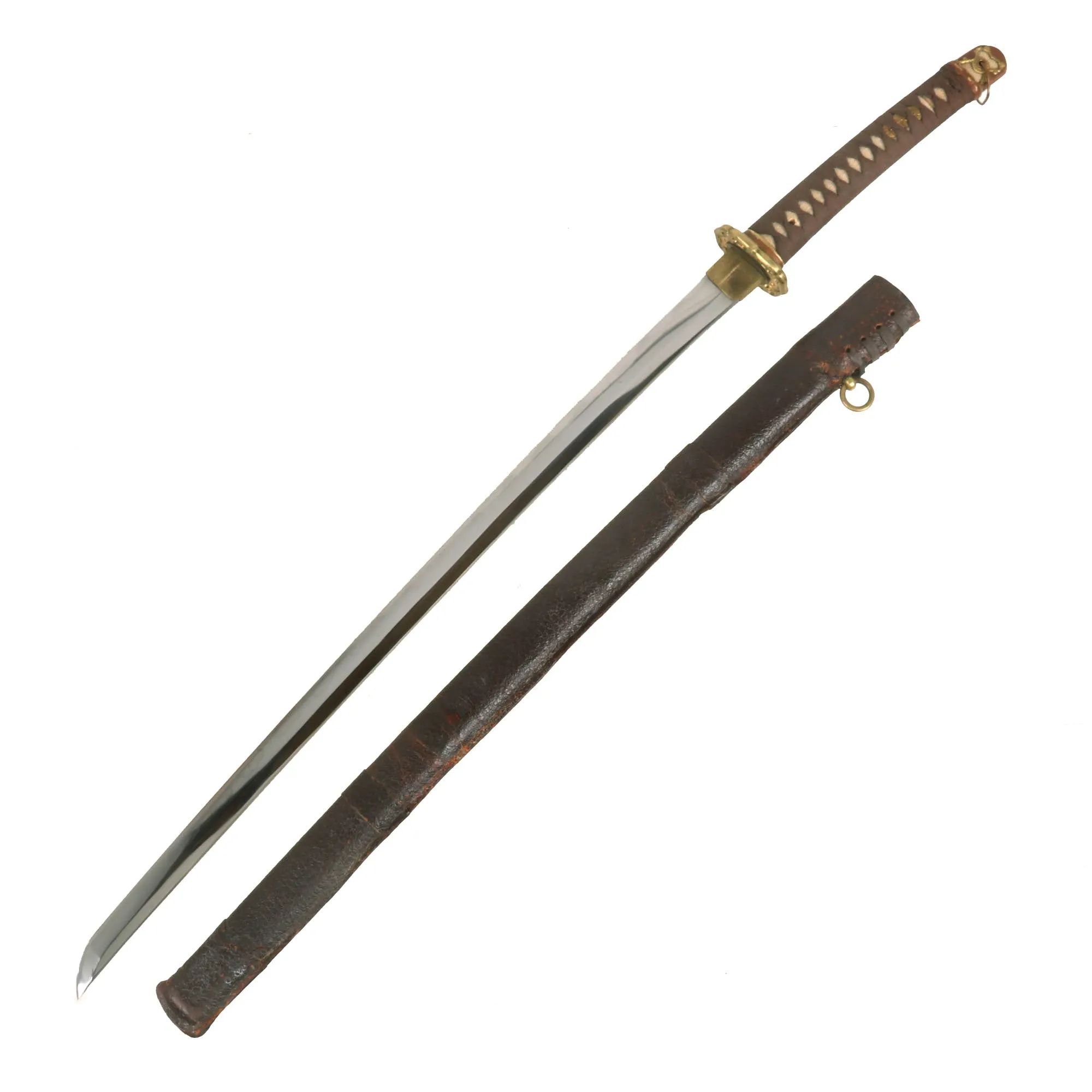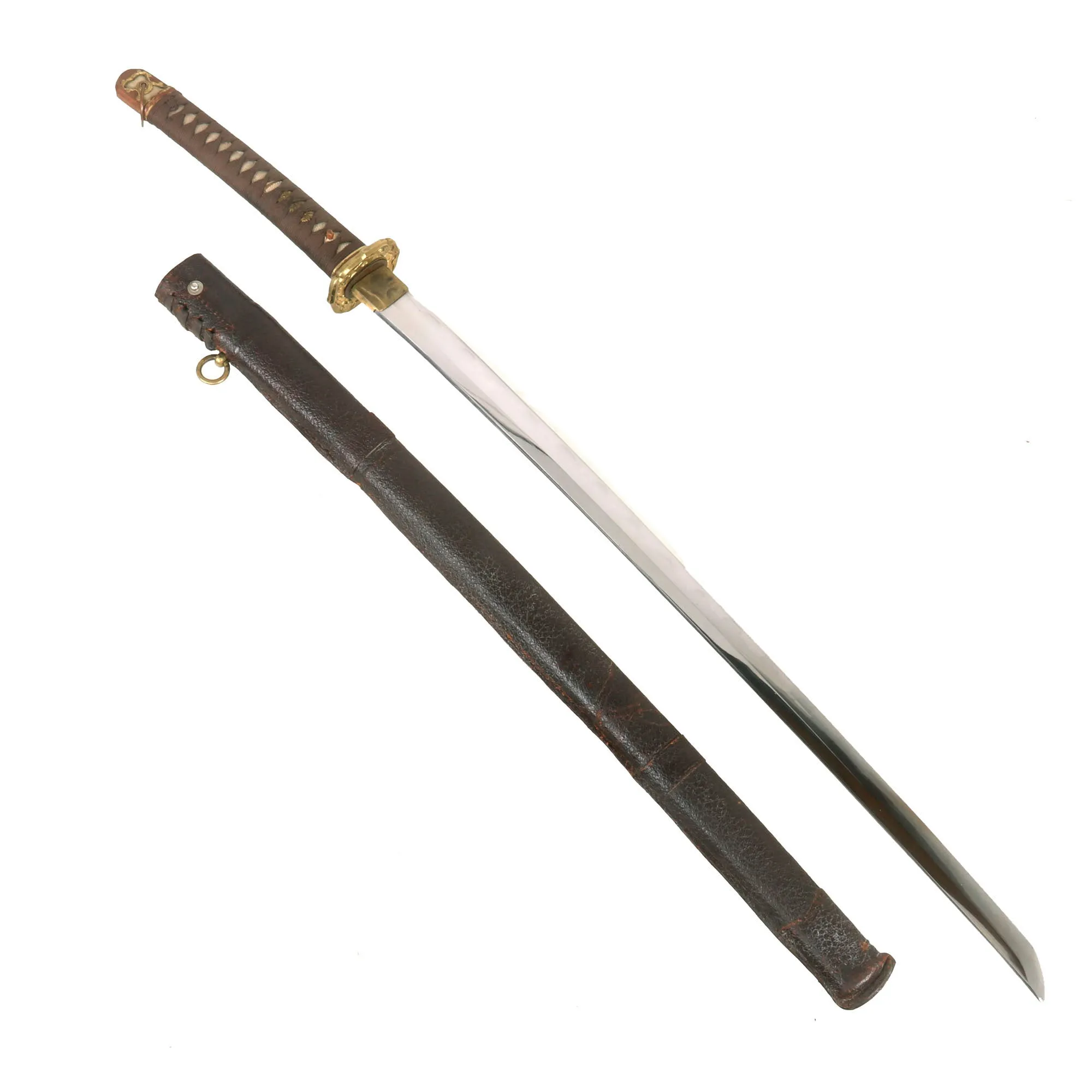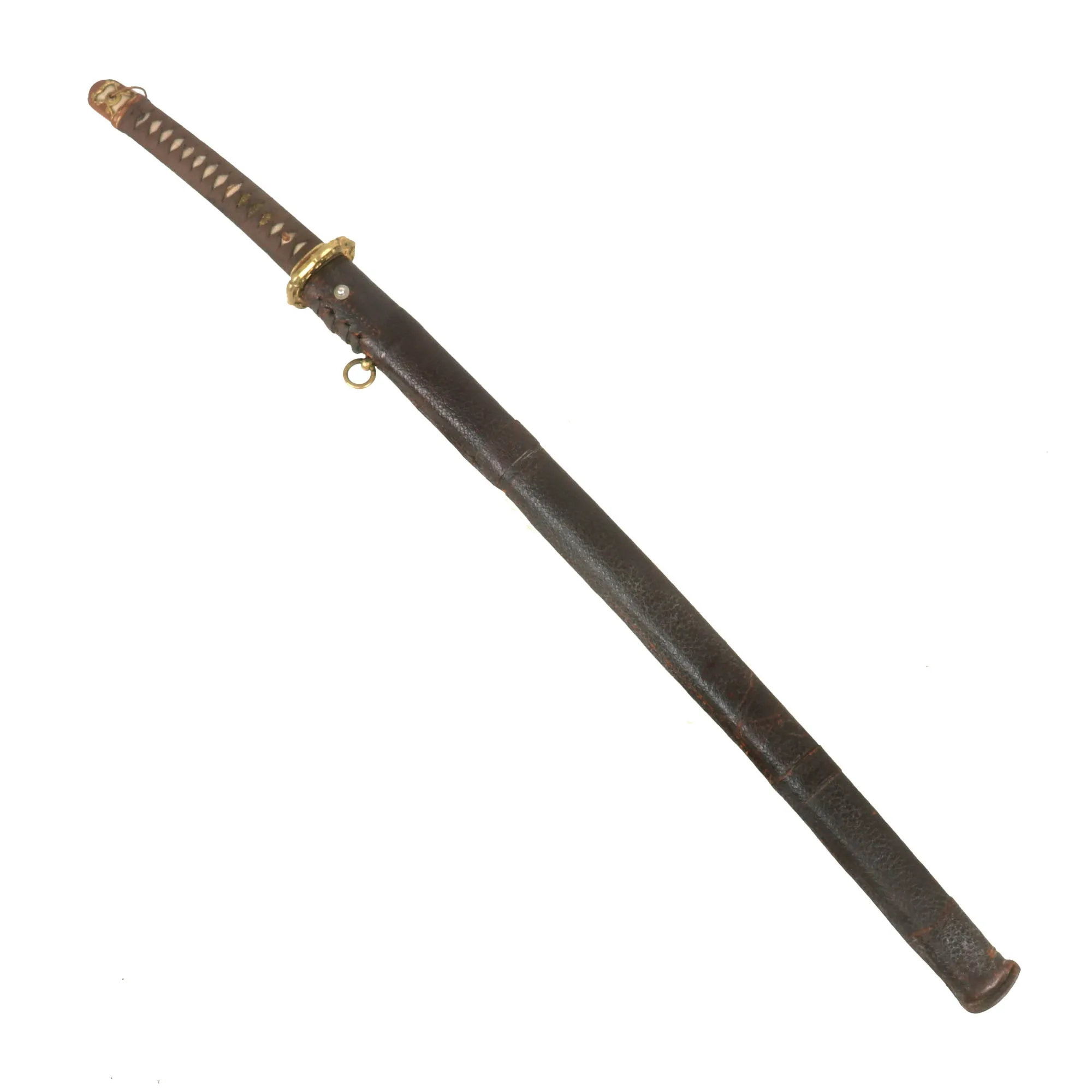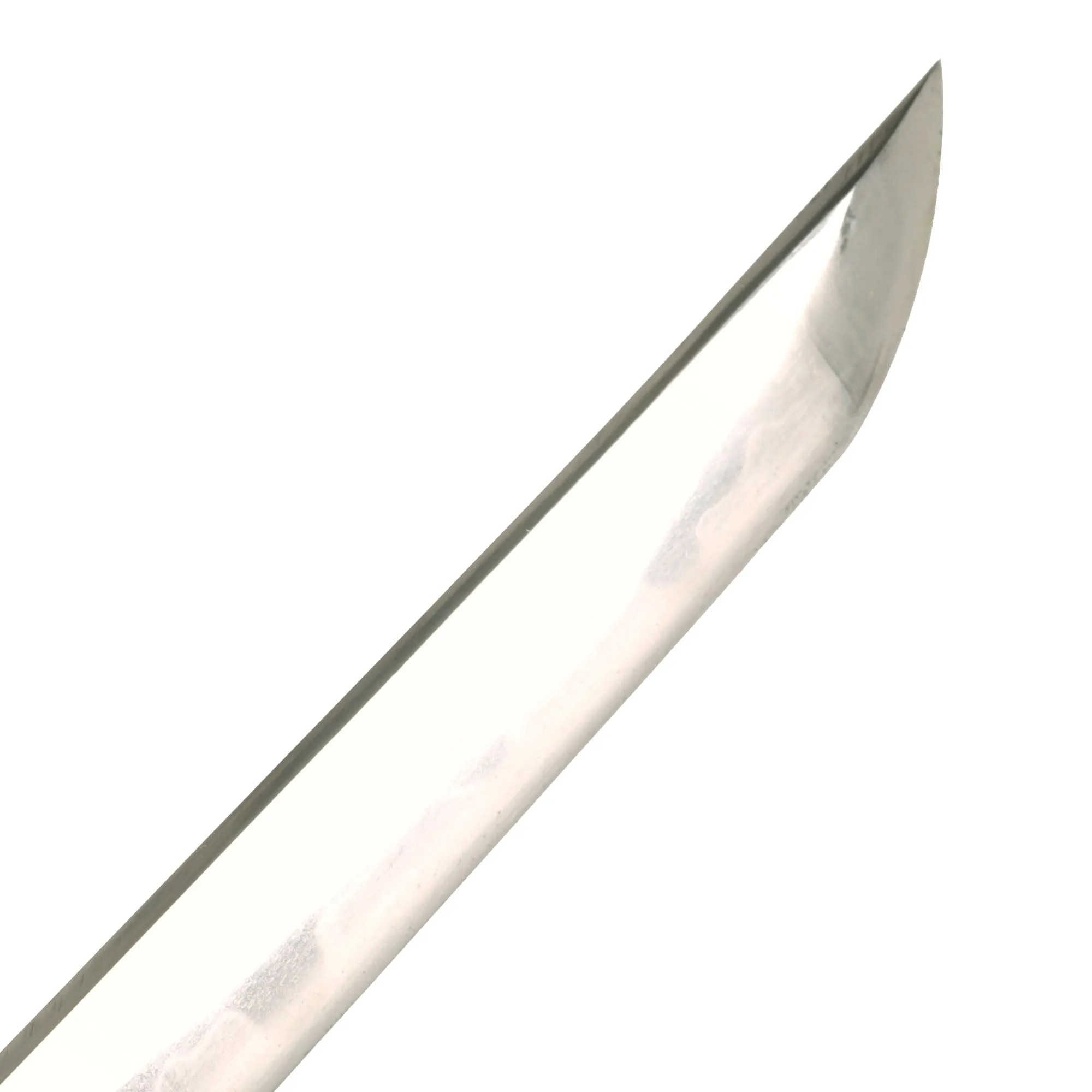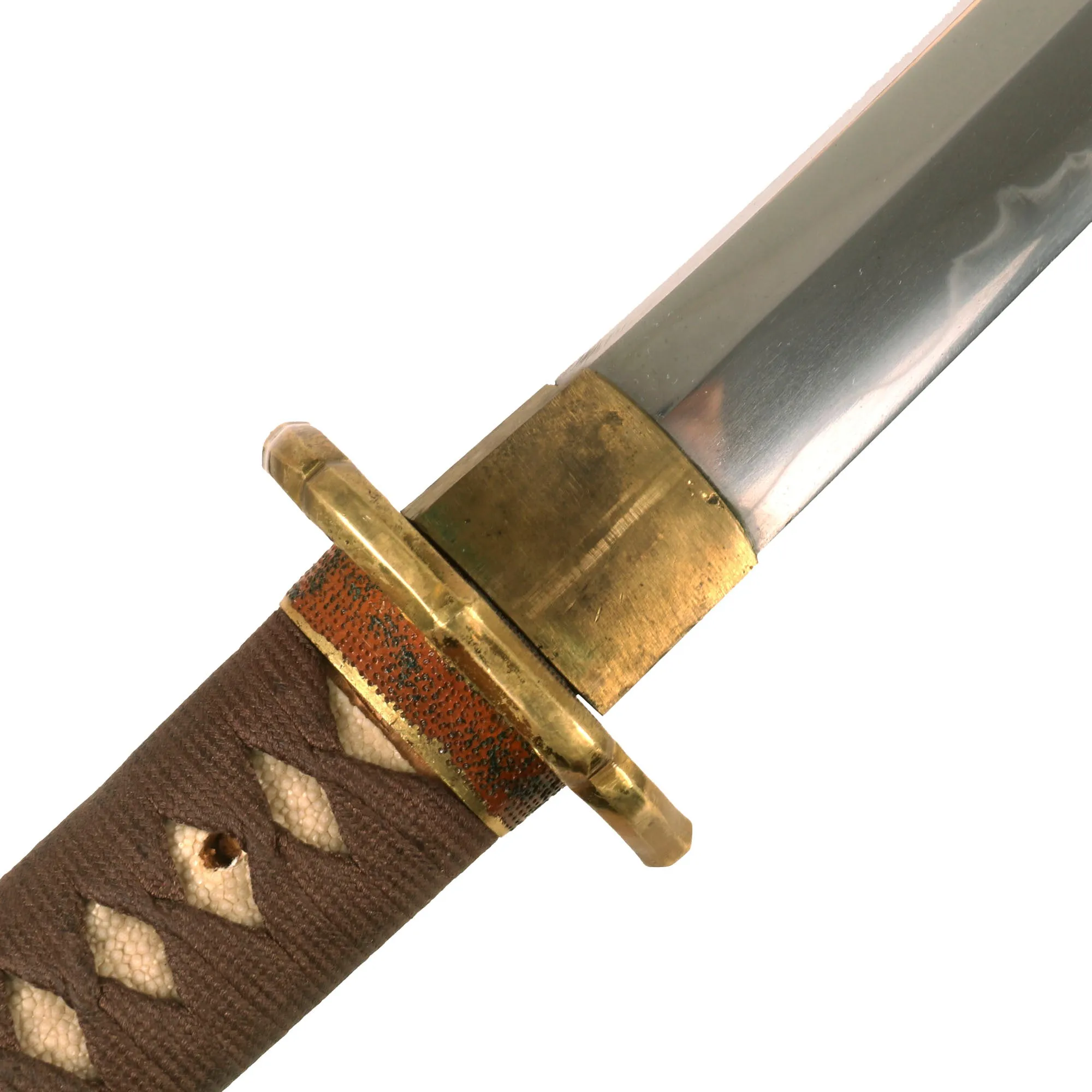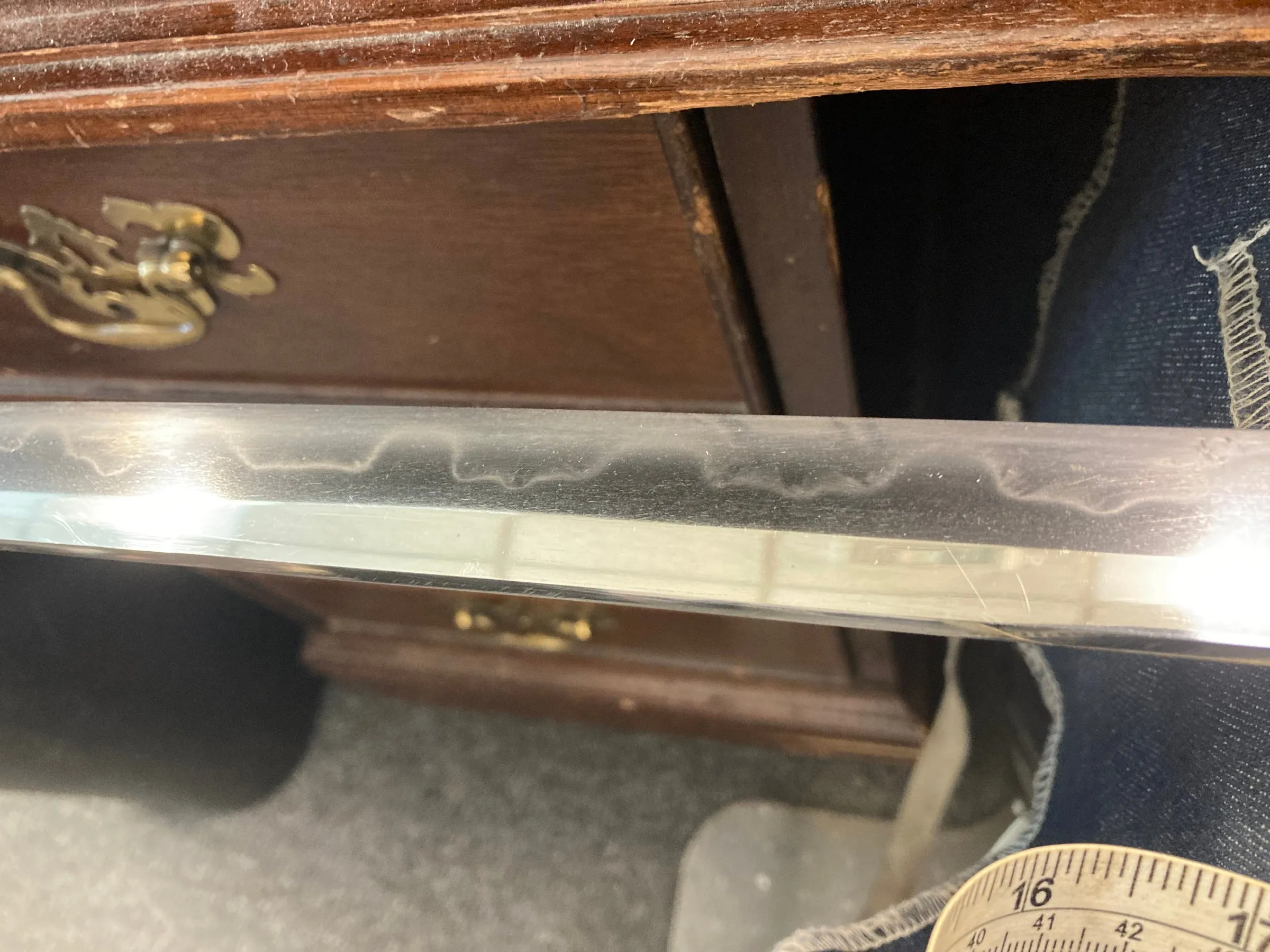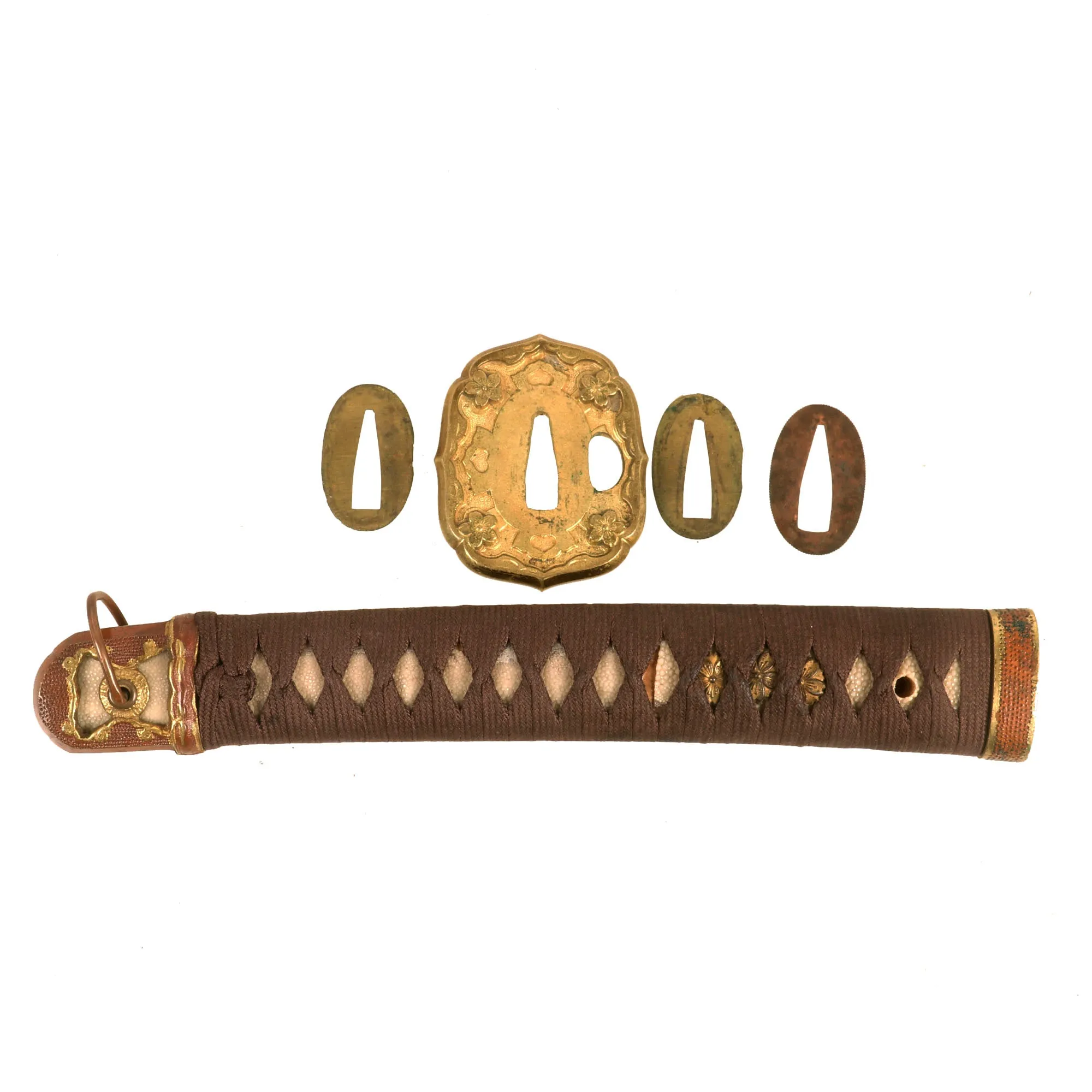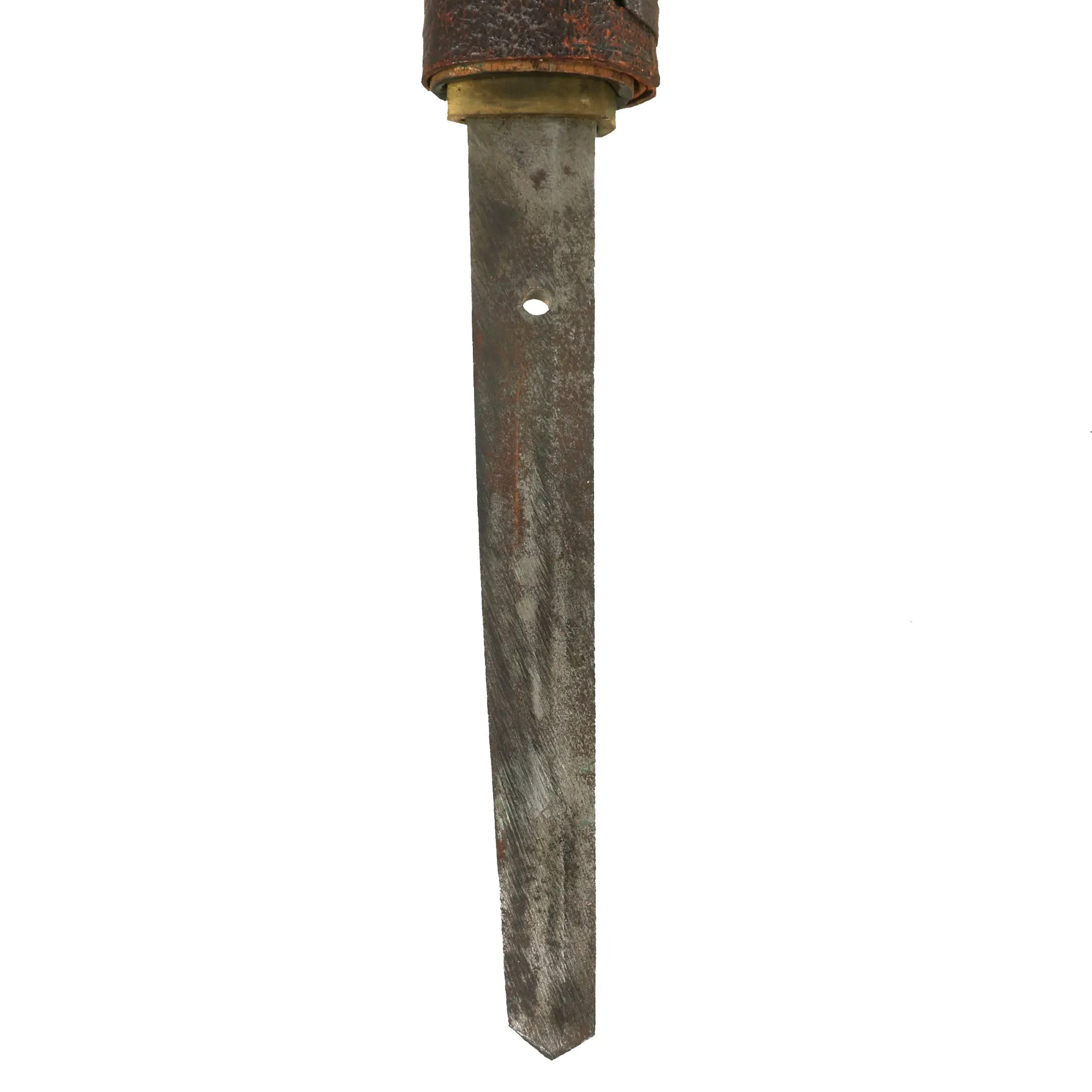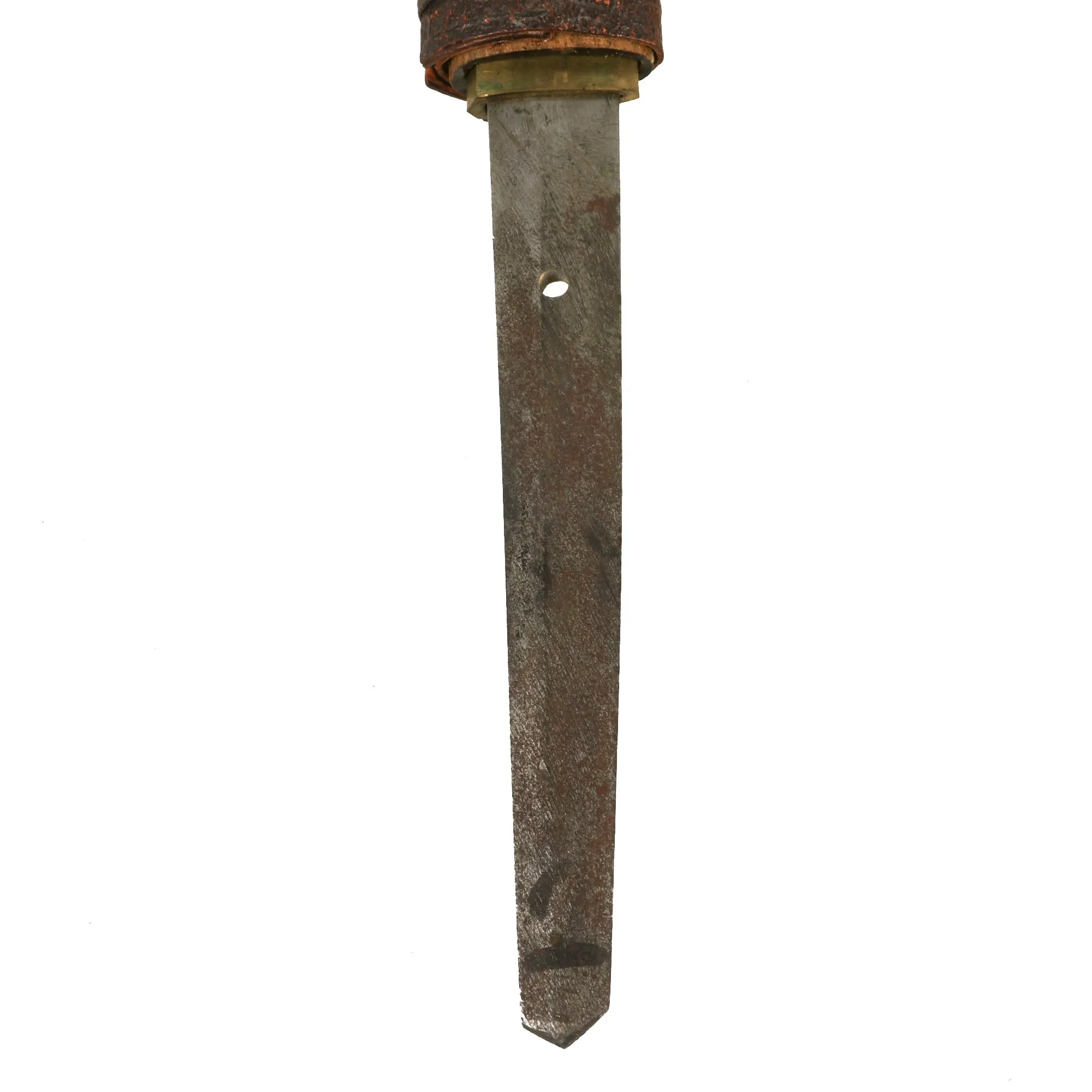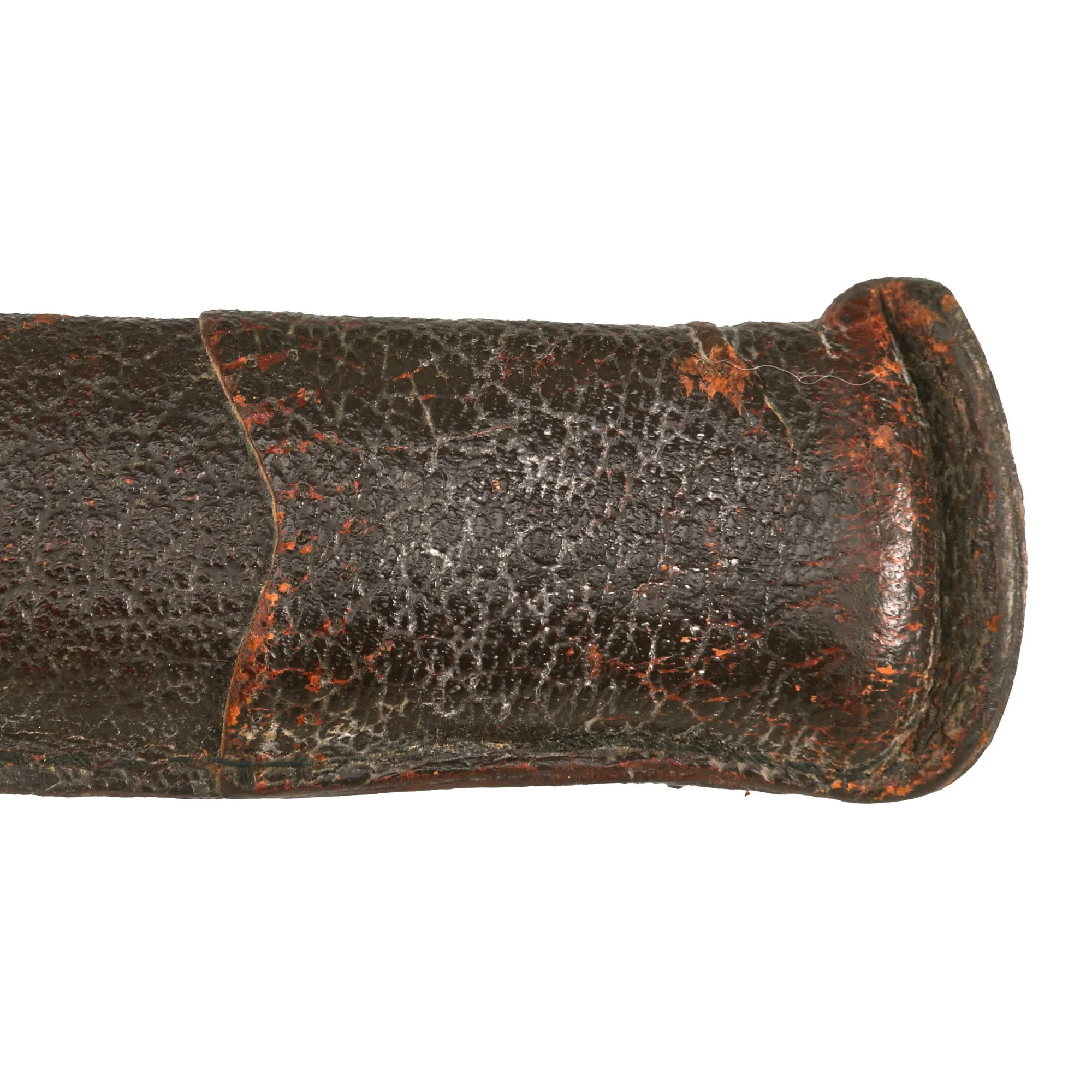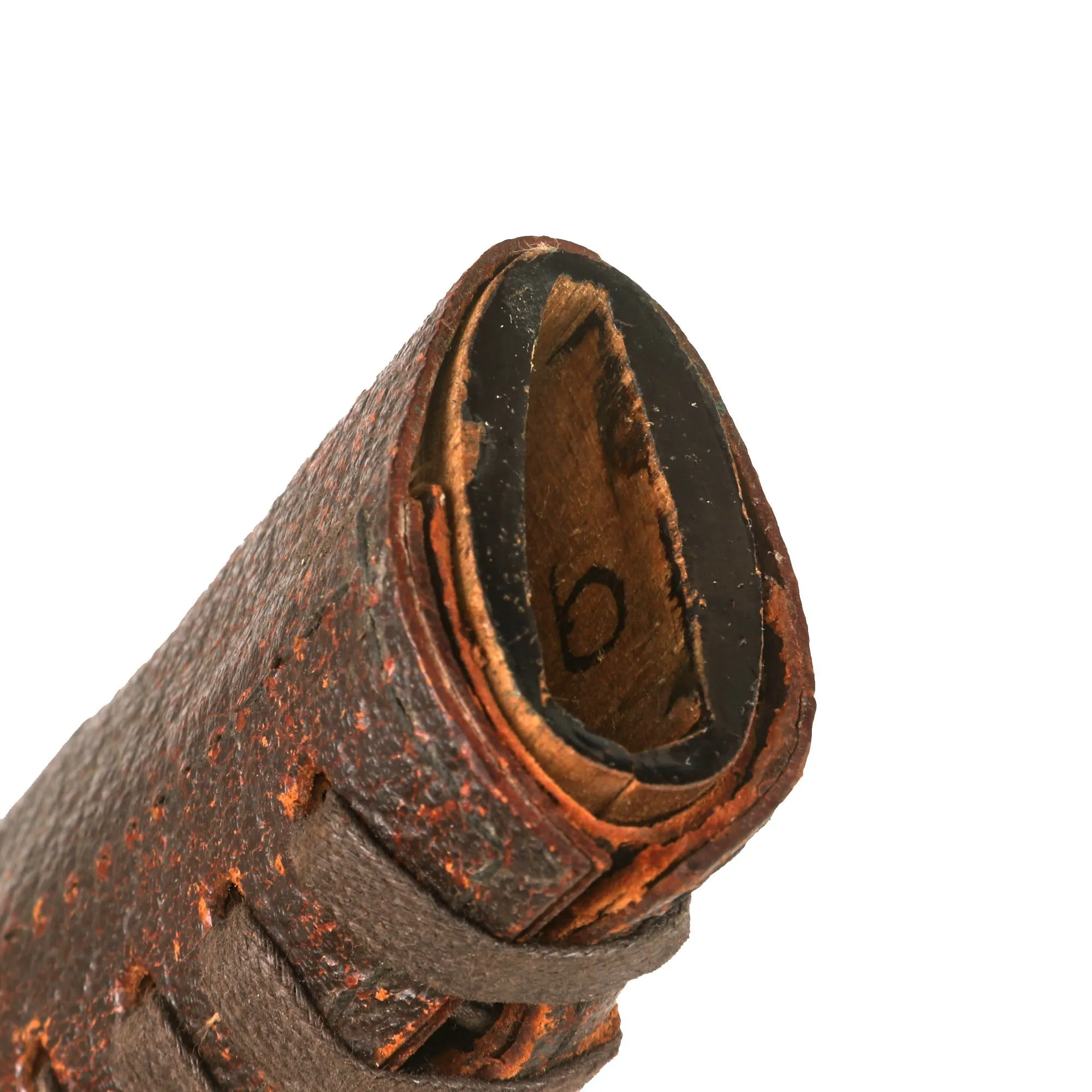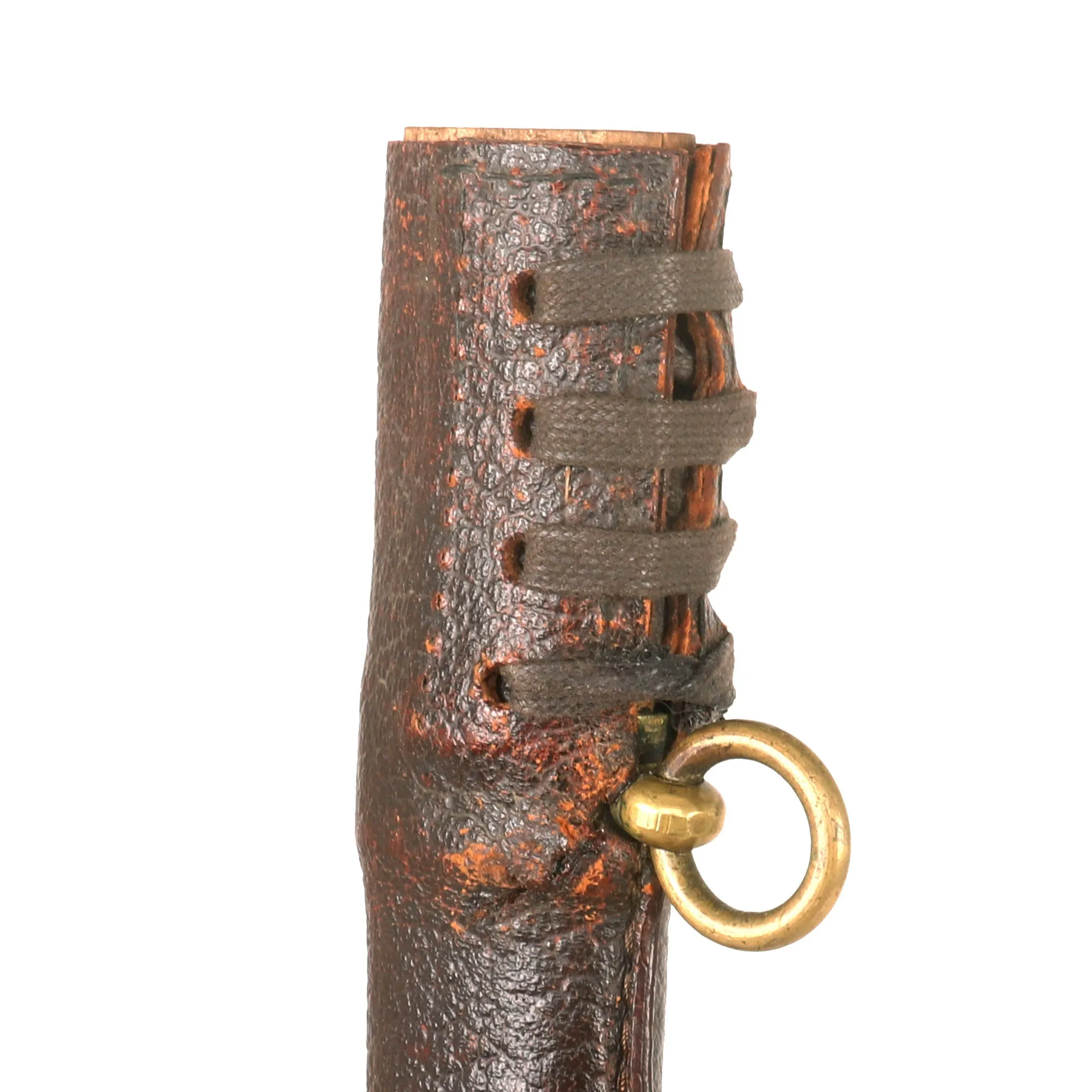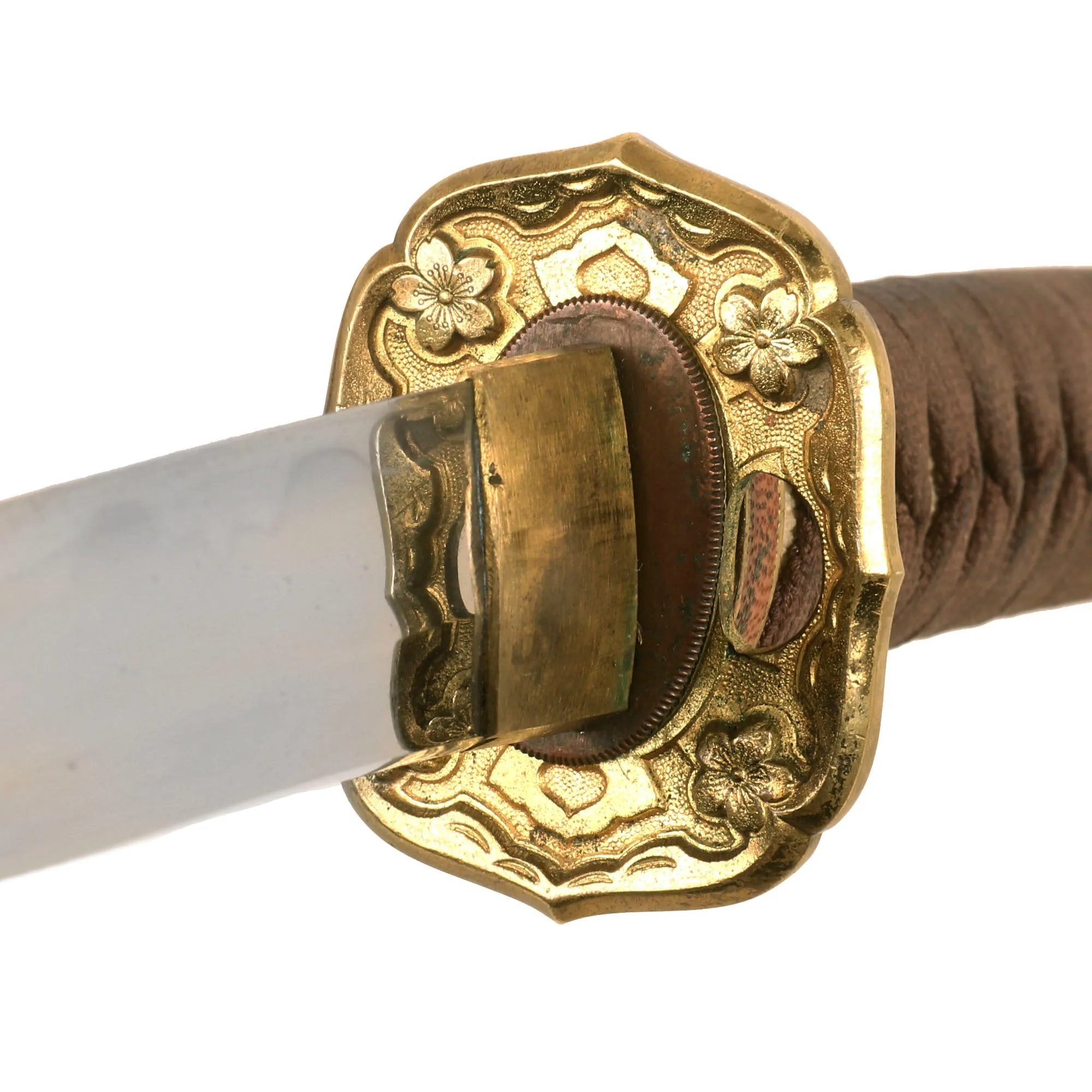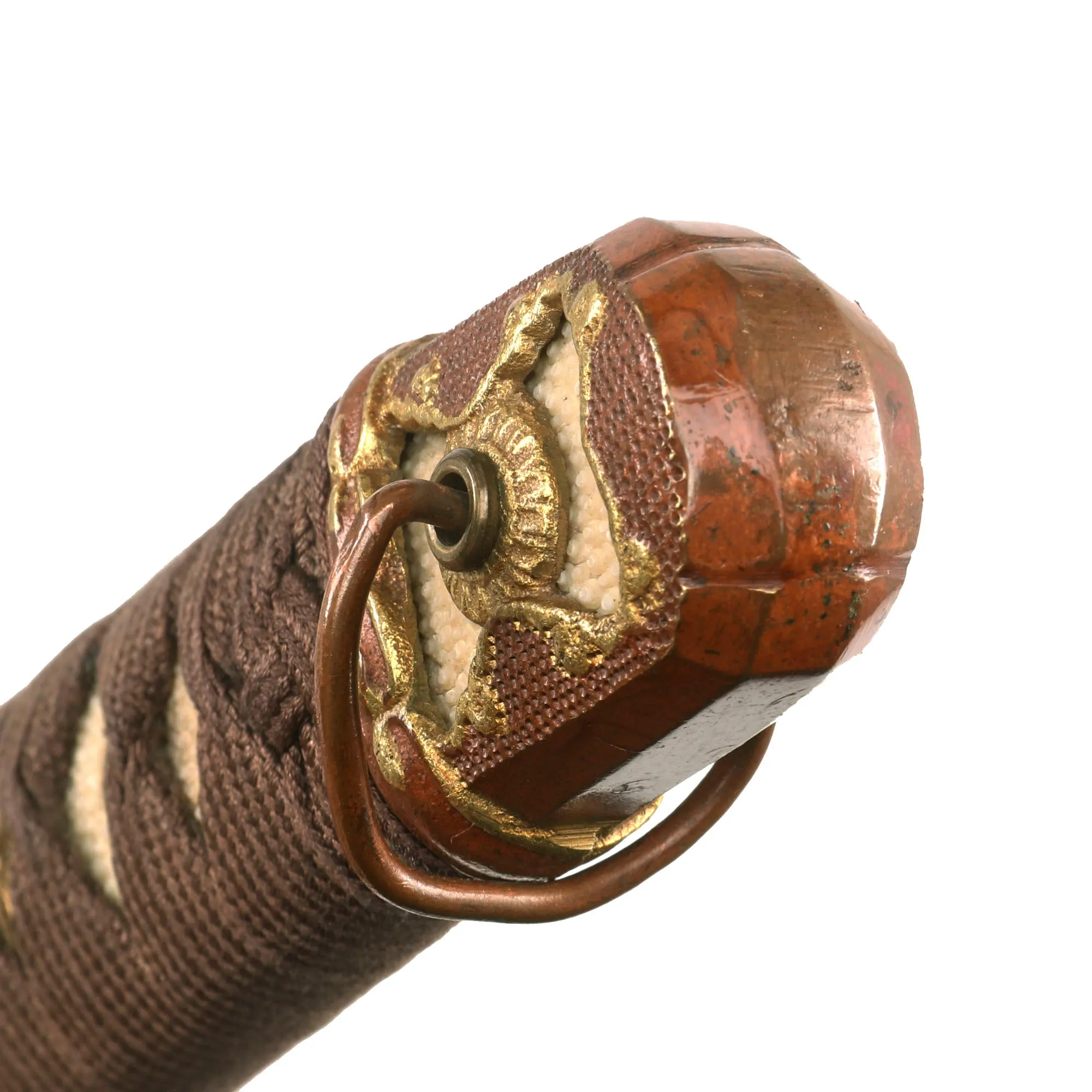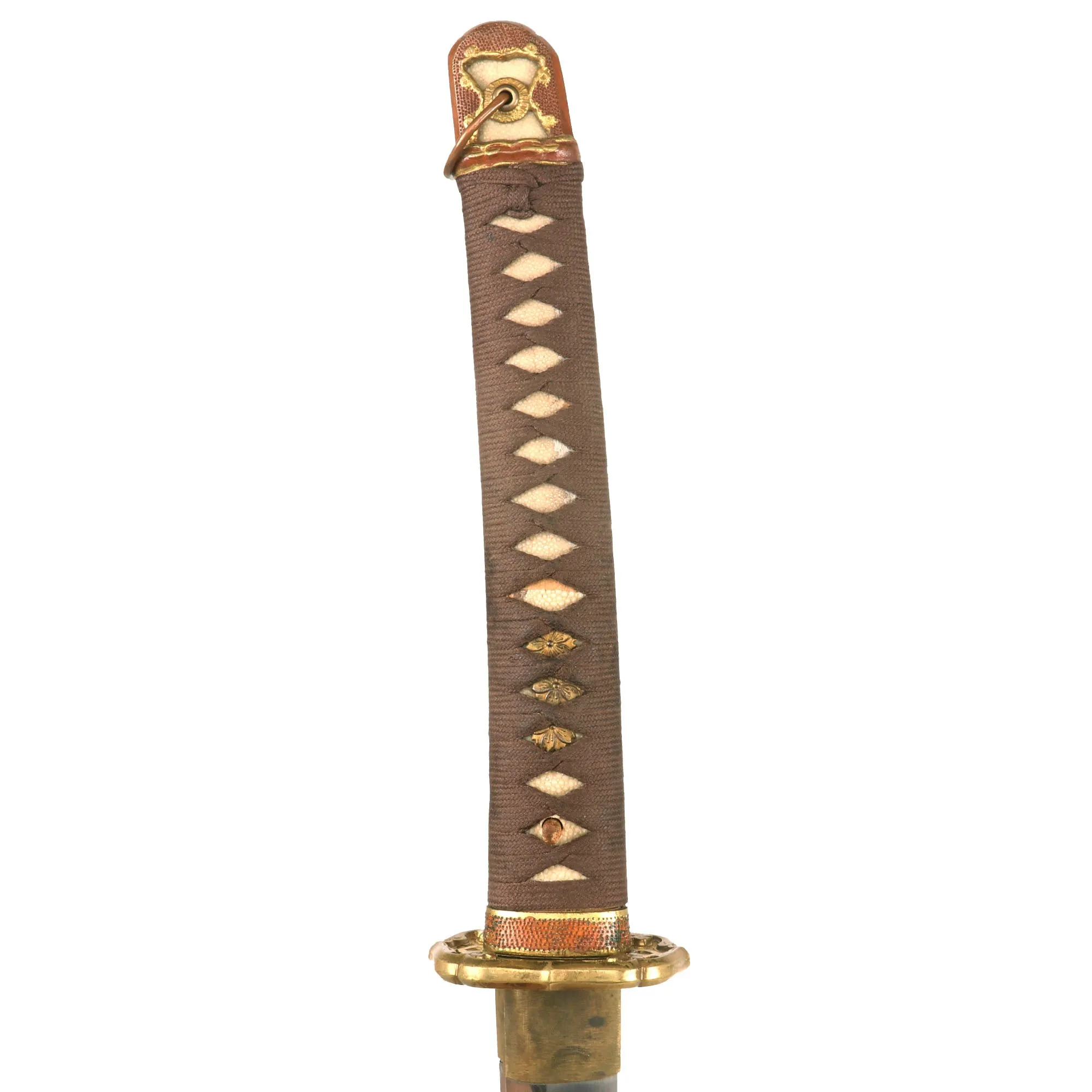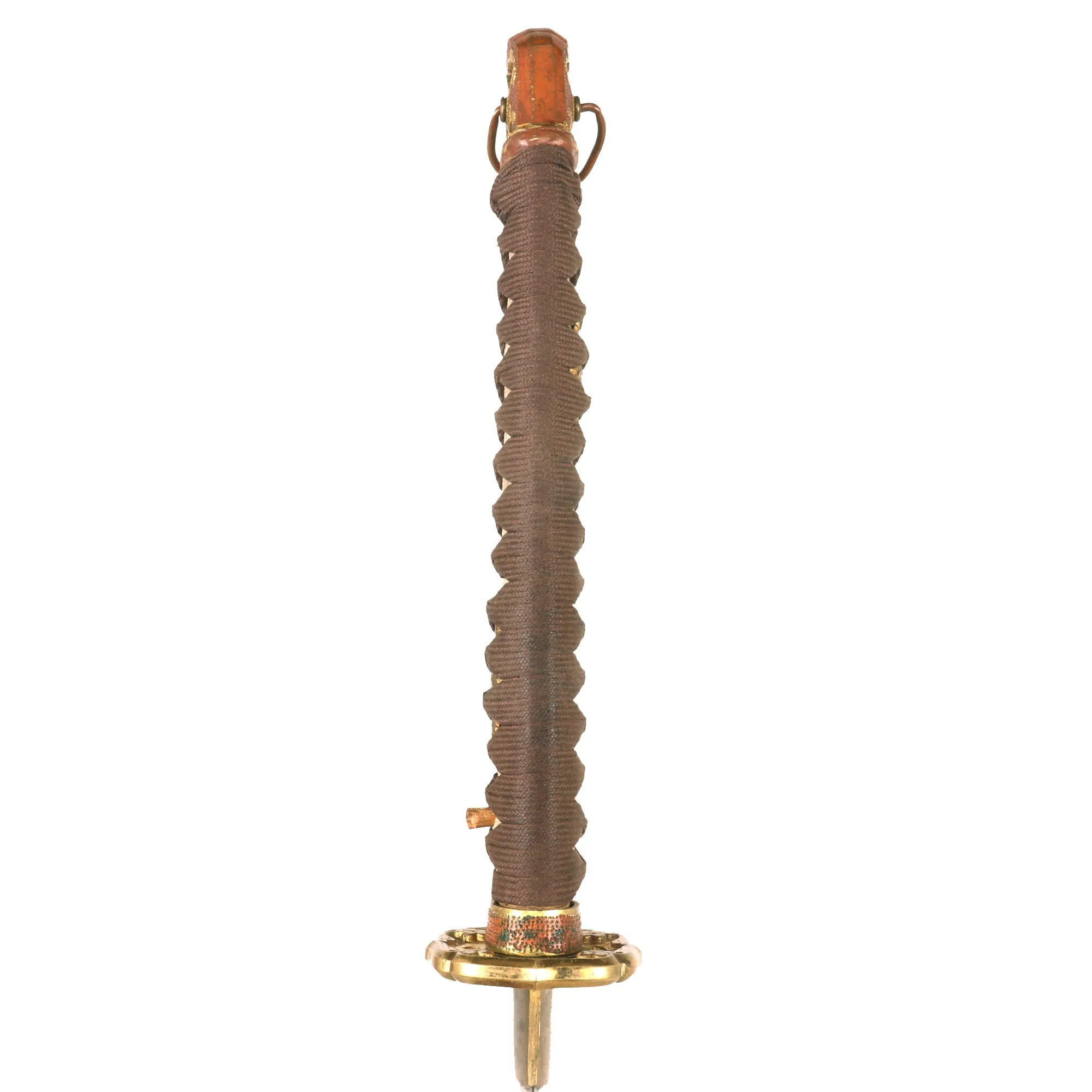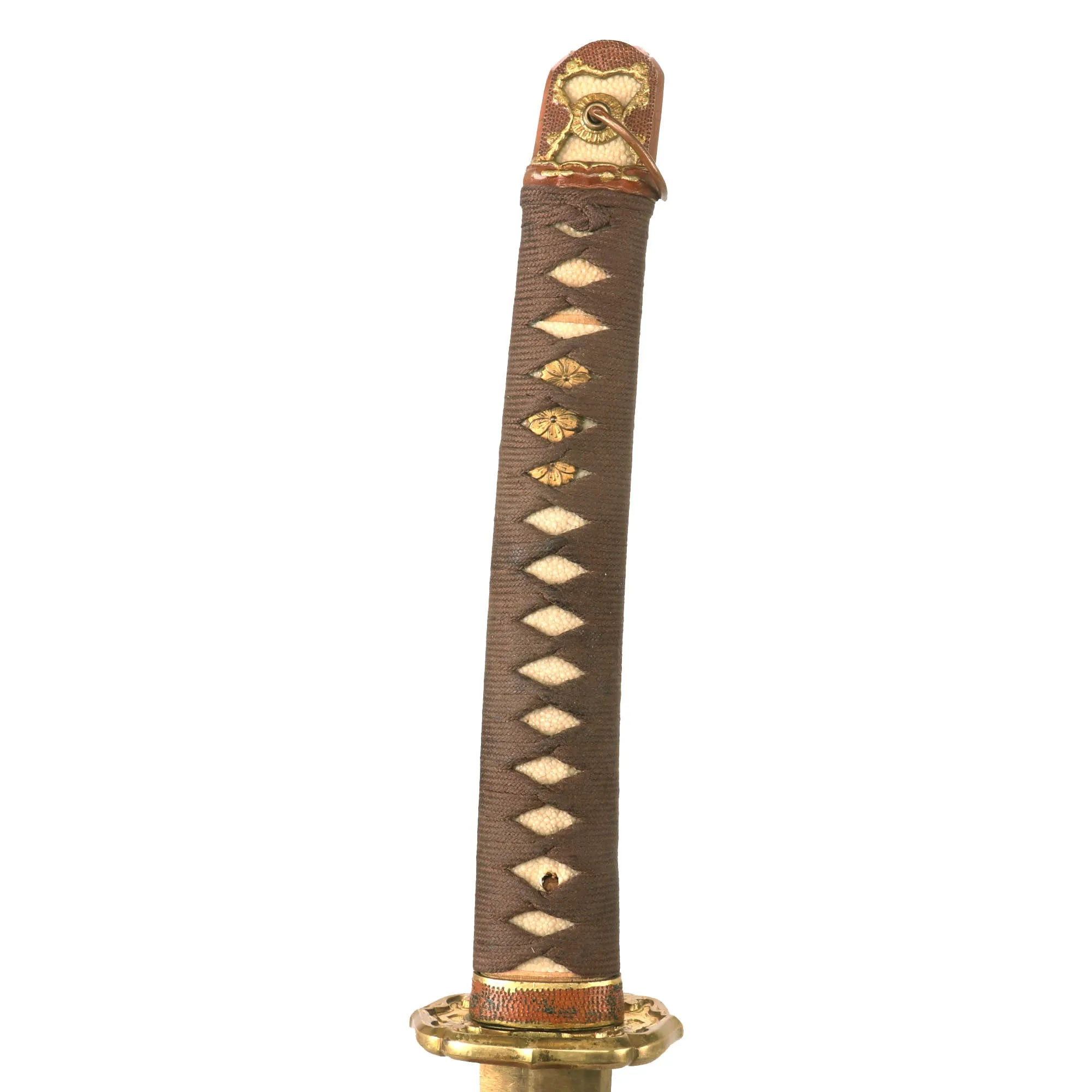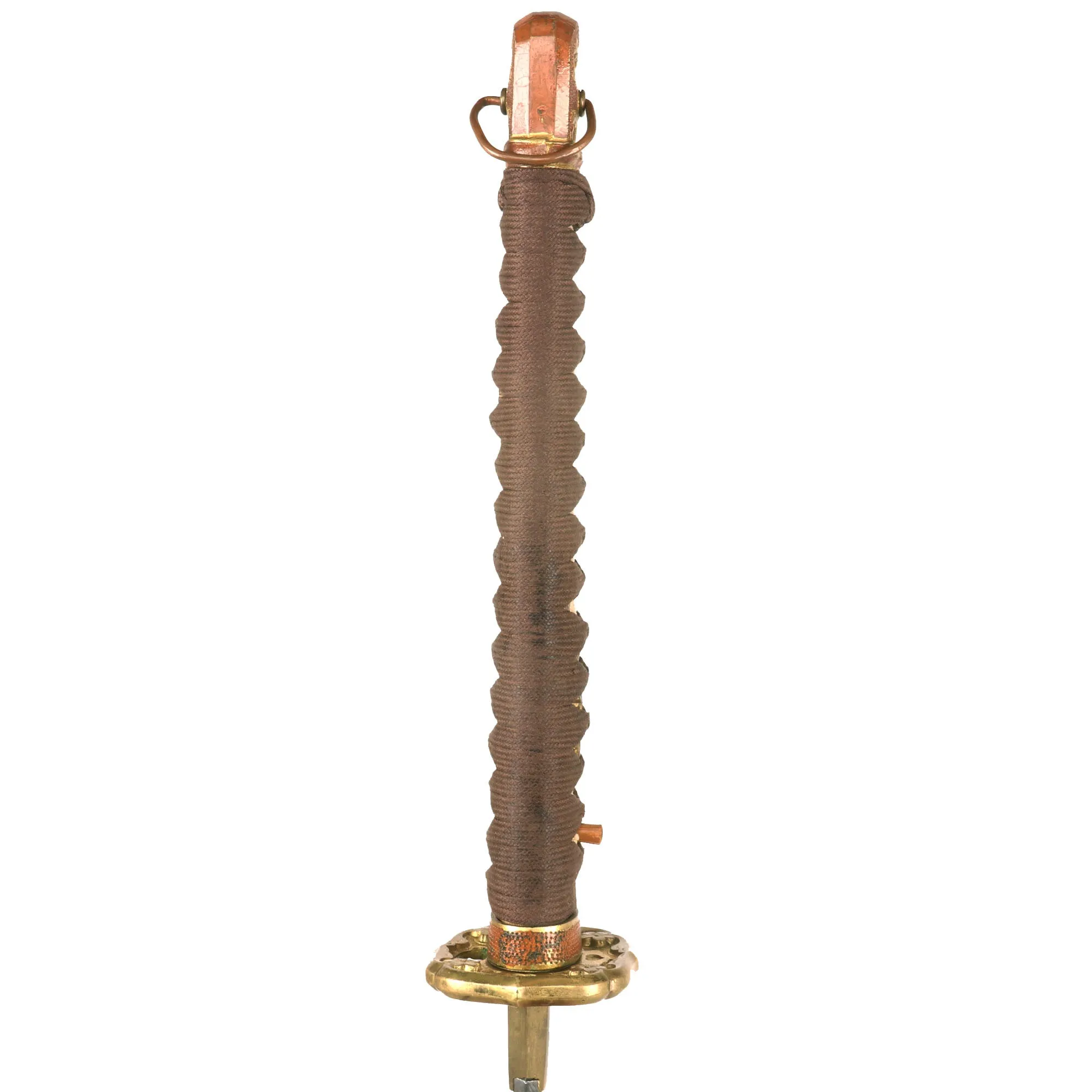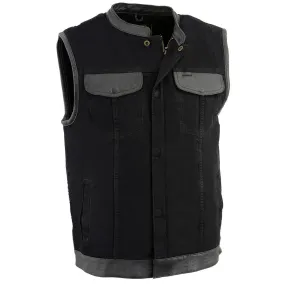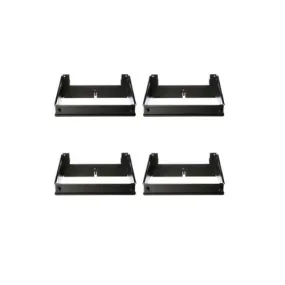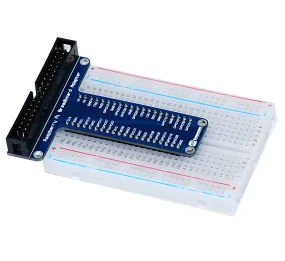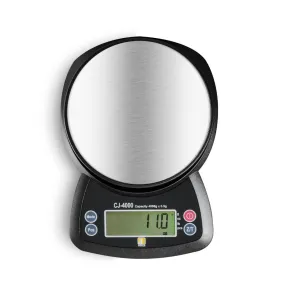Original Item: One of a Kind. Recently purchased from a private collector, this is an excellent condition USGI Bring-Back wartime production high grade Japanese officer Katana in the Type 98 Shin-Gunto (九八式軍刀 kyūhachi-shiki guntō) setting. We rarely see Type 98s in such good condition! This is how they are "supposed" to look, without wear removing the gilt accents and browned finish on the brass. There is just a bit of period wear, so it did see some service, but it was not abused at all.
The Type 98 fittings (koshirae) are slightly simplified compared to the earlier Type 94. The blade tang is signed by the maker, and appears to be handmade in the traditional fashion. A Shin-Guntō (新軍刀, new military sword) is a weapon and symbol of rank used by the Imperial Japanese Army between the years of 1935 and 1945.
The tang is unsigned 無銘 (mumei), or "anonymous", however it is certainly handmade in the traditional fashion. Many excellent blades do not have a signature, and the presence (or absence) of one has no relation to how it was forged, or the quality. It still shows strong YASURIME (鑢目 - file marks) on the tang, which help hold the handle in place, and it shows very little patination, typical of a Showa era blade.
The blade is handmade and was expertly crafted by a sword maker, which is indicated by a few tell-tale characteristics that include:
- Hole in the tang is punched and not drilled.
- Vibrant visible temper line ("hamon") with crystallization visible (Nie and Nioi)
- Blade has a proper geometric Yokote at the tip (kissaki) with a Boshi (tip temper line)
- Visible HADA (grain) in the body of the blade and lamination in the temper line.
Offered in excellent condition, the blade is still VERY sharp and looks great. There are no nicks on the edge that we can see, just some wear from the scabbard in areas, and a bit of a oxidation on the edge at the very tip of the blade. Overall the polish on the blade is excellent, with just a few small specks of oxidation staining, so the aspects of the blade are easily visible. Blade length is approximately 26 ¼ inches and overall length 37 ¼ inches. The katana has a handmade blade with a Futsu 普通 (regular) Nakago (tang) with an Iriyamagata (asymmetrical pointed) nakago-jiri (tang tip).
The blade has a proper kissaki (tip) with a clear yokote (division between body and tip) and boshi (tip temper line). The main edge HAMON (刃文 - temper line) is fully visible, and looks to be a very attractive HAKO GUNOME (箱互の目 - box shaped with undulation) shape. However it also has some great YAHAZU (矢筈 - arrow notched) aspects at the corners and within the "boxes". We've really never seen a temper line like this! Due to use of flash photography, it is nearly impossible for us to capture the hamon with our usual photography, so we have included a cell phone picture that shows the blade in much more detail.
Along the transition there are clear NIE crystals visible, with cloudy areas of NIOI in the body of the hamon, and some nice activity. This includes ASHI, which are lines of NIOI running towards the edge. The body of the blade (JI) also shows hada (grain), which is the MASAME (straight) pattern, very fine and tight, typical of Showa era blades. The tip temper line (boshi) is of visible, and is of the KO-MARU (小丸 - small round turnback) shape. With the long delay for traditional togishi polishing, blades like this that are ready to display are definitely in demand.
The blade mountings (koshirae) are in excellent condition, and are the classic WWII era Type 98 Army Shin-Gunto style, browned brass with gilt accents. These include a rounded "quince" shaped tsuba (cross guard), which retains the gilding very well. There are also brass Imperial Army cherry blossom menuki (grip decorations), and a nice Kabuto-Gane (Pommel Cap). The cross guard and pommel cap have matching cherry blossom motifs, which are also found on the scabbard fittings, and the fuchi (grip collar). There are 3 Seppa (spacers) around the cross guard to keep the fit tight, though it is a bit loose. The cross guard a cutout for a scabbard lock strap, however the strap itself is missing, along with the leather washer, which is why be believe it is loose now. The blade collar (habaki) looks to be the standard plated brass alloy.
The handle (tsuka) has an great Sa-Me (Stingray Skin) grip, which is fully intact, made from multiple pieces. It definitely looks to be real stingray skin, and not the synthetic celluloid version sometimes used. It has a complete dark brown Ito (cloth binding), which shows only light staining and light wear. There is a single wooden securing peg (mekugi) still present, which looks to be original.
The Scabbard (saya) on this example is wood, covered with a brown leather field cover, often seen on swords later in the war, as they required far less materials and production time. The leather has matured beautifully, showing some finish wear and flaking, but no major damage, just some small tears and cracks from age. It still has intact lacing at the top, and a brass hanger loop installed under the cover. It does not look to have seen any real service during the war, and we assume any condition issues are from age and storage. It does have a snap near the top, which originally would have connected to a strap on the hilt, which is unfortunately missing.
An incredible handmade Japanese Type 98 Shin-gunto Katana with a very attractive blade in great polish! We almost never see them this good! This is a real USGI bring-back from WWII, ready to display and cherish!
Specifications:
Blade Length: 26 ¼"
Blade Style: Katana
Overall length: 37 ¼“
Scabbard Length: 28"
It has been over one thousand years ago that the art of making swords appeared in Japan. The swordsmiths of the time may not have known it but they were creating a legendary sword. The Samurai sword has seen combat in many battlefields. From the early days of the Samurai warrior to the fierce battles in the South Pacific during WWII.
Each hand-made Samurai sword is unique because it is forged from folded steel stock. A tremendous amount of work is dedicated to creating these pieces. They were an instrument of war as much as a beautiful artifact to adorn a room.
The Samurai sword has grown to be one of the most highly desired military antiques.

 Cart(
Cart(